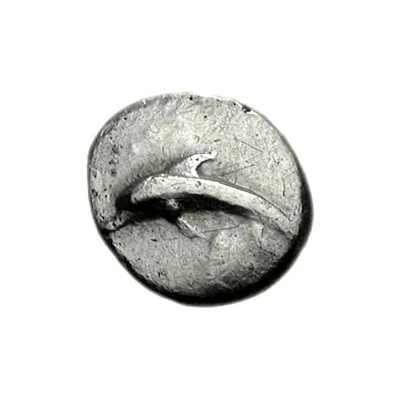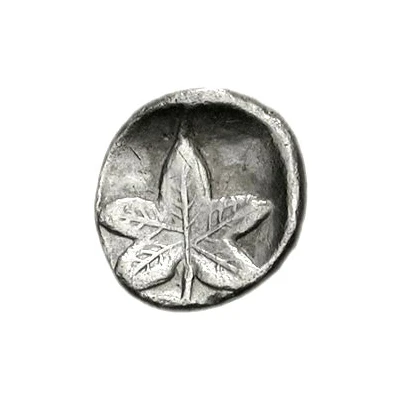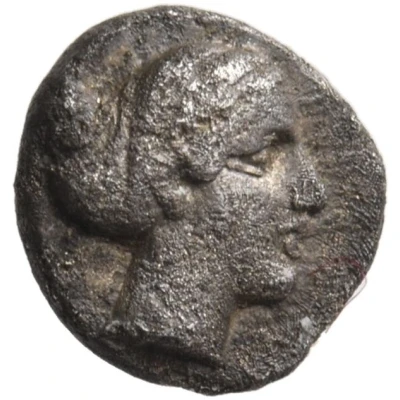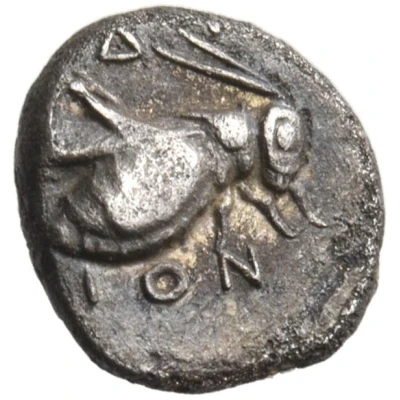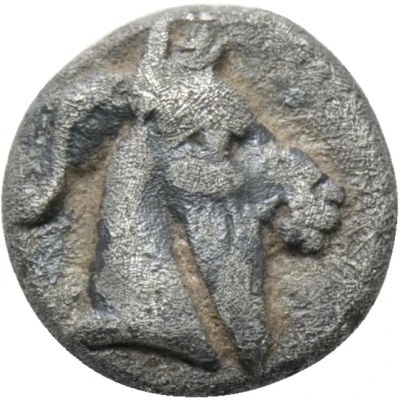
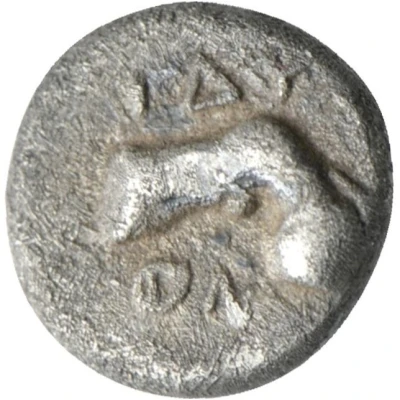

© Numismatik Naumann GmbH
Hemiobol 410 BC - 400 BC
| Silver | 0.36 g | 8.0 mm |
| Issuer | Idyma (Caria) |
|---|---|
| Type | Standard circulation coin |
| Years | 410 BC - 400 BC |
| Value | Hemiobol (1⁄12) |
| Currency | Drachm |
| Composition | Silver |
| Weight | 0.36 g |
| Diameter | 8.0 mm |
| Shape | Round (irregular) |
| Technique | Hammered |
| Demonetized | Yes |
| Updated | 2024-10-09 |
| Numista | N#181651 |
|---|---|
| Rarity index | 97% |
Reverse
Goat hoof.
Script: Greek
Lettering: IΔΥMION
Interesting fact
The Hemiobol coin was used as a form of currency in ancient Greece, specifically in the city of Idyma (Caria) during the 5th century BC. The coin features an image of a mythical creature called a "sphinx" on one side and an inscription of the city's name on the other. The sphinx was a symbol of wisdom and strength in ancient Greek mythology, and its presence on the coin may have been intended to convey the city's values or aspirations.
